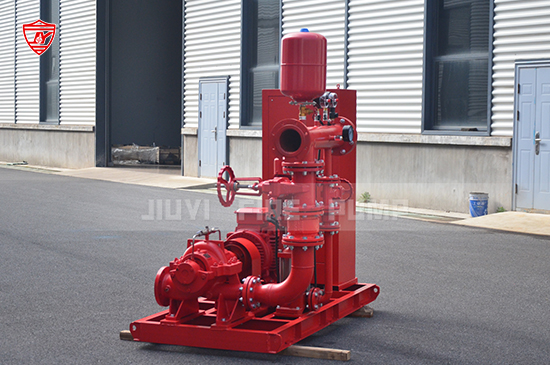Upgrading fire safety in older buildings is a critical task—especially as regulations evolve and modern threats increase. Retrofitting a fire pump system into an older structure ensures better protection and often brings the building up to NFPA and local code standards. Here’s how to do it effectively.

Before any retrofitting begins, conduct a full audit of the existing fire protection setup:
Are there old or non-functional fire pumps?
Is there adequate water supply and pressure?
Is the existing system compliant with NFPA 20?
Partner with a certified fire protection consultant or engineer to perform this evaluation thoroughly.
Older buildings come with unique limitations:
Limited space in mechanical rooms
Outdated piping and electrical systems
Structural challenges that affect equipment installation
Designing a custom solution that fits the existing structure while meeting modern standards is key.
Choose from:
Electric Fire Pumps – Reliable and low maintenance if power supply is stable.
Diesel Fire Pumps – Ideal for buildings with limited electrical capacity.
Vertical Turbine Pumps – Useful when water source is below-grade, like wells or tanks.
Jockey Pumps – Maintain pressure and reduce wear on main pumps.
Each building may require a combination of these to meet both performance and code requirements.
Fire pump retrofits must follow NFPA 20 standards. Work closely with manufacturers and certified installers who understand compliance requirements, including:
Proper clearance
Adequate ventilation for diesel pumps
Alarm and controller integration
Seismic bracing where needed
Build access points for future inspections and regular maintenance. Choose pumps with remote monitoring features when possible for easier ongoing management.
Working with an experienced fire pump manufacturer ensures:
Proper equipment selection
Custom-built solutions for retrofit applications
Full documentation for code compliance
Reliable after-sales support